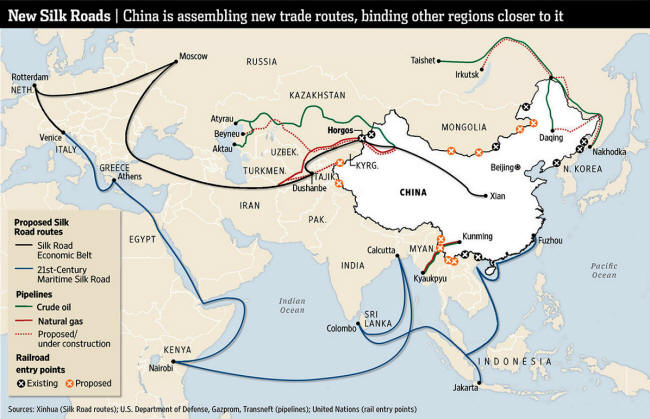The old Silk Road is a 'legend,' whereas the New
Silk Road is a real megaproject.
China wants to reconnect the world though a network
of roads, railways, ports and airports between Asia
and Europe.
A team of reporters travels by sea and land along
the New Silk Road and shows how China, with the
largest investment program in history, is expanding
its influence worldwide. Their journey begins in
Shenzhen on the Pearl River Delta.
This is where China's legendary rise to an economic
superpower began 40 years ago.
The private market economy experiment unleashed
forces that allowed Shenzhen to grow into a
mega-metropolis.
The team takes a container ship towards Southeast
Asia. Its first stop is the port city of
Sihanoukville in Cambodia.
A joke is making the rounds there these days: you
can now travel to China without a passport and
without leaving your own country. Sihanoukville is
now almost part of China itself!
The Chinese have financed practically everything
built here in the recent past: the extension of the
port, new roads, bridges and factories. Many
Cambodians are unhappy and feel like losers in the
boom.
Rising prices and rents are making the poor even
poorer. But for land and house owners, on the other
hand, it's a bonanza.
In Myanmar, resistance is already growing.
Locals in Kachin have successfully blocked a new dam
project, asking how the Chinese could produce energy
for their own country whilst leaving the locals
themselves without electricity?
The Myanmar government pulled the emergency brake
and the huge Chinese dam project did not get beyond
the first concrete piers in the river.
The Karakorum Highway from Kashgar in China across
the Roof of the World to Islamabad in Pakistan is
one of the most difficult and dangerous roads in
this breathtaking mountain world.
Once the road is finished, it often disintegrates
again, and rock falls and landslides block the
highway as if the Karakorum Mountains are trying to
deny China strategic access to the Arabian Sea.
The first part of the report ends in Islamabad.




